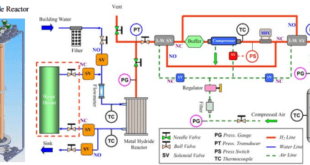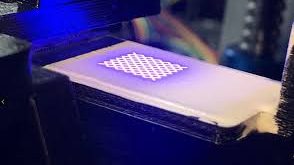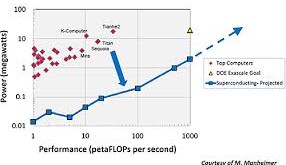Recent advances of high power solid state lasers promises necessary laser power levels required for the Directed Energy Weapons (DEW) systems. However, inefficiencies of the laser components still generate too much waste heat to be managed by conventional liquid cooling systems, especially in an airborne platform where compactness, light-weight and …
Read More »Researchers use Graphene for miniature inductors enabling Ultra-Miniaturized Electronics Devices
The inductors along with capacitors and resistors, inductors are one of the three passive elements that are the foundations of all electronics. An inductor works by inducing a magnetic field as an electric current flows through its coil of wire. This magnetic field temporarily stores electric energy as magnetic energy, …
Read More »Heterogeneous Integration Technology enhance capability of military RADAR, communications, imaging and sensing systems, DARPA’s DAHI, and CHIPS led its development
Modern warfare is increasingly dependent on microelectronics capabilities that sense the environment, convert the signals into data streams, process the information, and generate a response. In this sense, Aerospace and Defense (A-D) systems are quite similar to commercial systems that perform communications and computations, while taking advantage of the advancement …
Read More »New materials bringing Thermoelectric generators or heat-to-power technology close to deployment
Thermoelectric energy harvesting mainly depends on the operation of the thermoelectric generator (TEG). A thermoelectric (TE) device can directly convert heat emanating from the Sun, radioisotopes, automobiles, industrial sectors, or even the human body to electricity. A TEG converts heat directly into electrical energy according to the Seebeck effect. …
Read More »Superconductors enable new military capabilities from Surveillance, Radars, Communications to electric propulsion
In 1911, a Dutch scientist discovered a class of materials which, at temperatures near absolute zero, could conduct electricity with no resistance and therefore zero loss of power. These materials called Superconductors have unique properties including, Zero resistance to direct current; Extremely high current carrying density; Extremely low resistance at …
Read More »New piezoelectric manufacturing technologies enable 3D printing of piezoelectrics, sensors and transducers
The piezoelectric effect was discovered by brothers Pierre and Jacques Curie in 1880, and named after the Greek word piezein, that means to press or squeeze. They found that certain crystals were able to generate an electrical charge when mechanically loaded with tension or pressure. If exposed to an electric …
Read More »DARPA DSO XSOLIDS pursuing production technologies for Materials formed under ultrahigh pressure, known as extended solids
Materials with superior strength, density and resiliency properties are important for the harsh environments in which Department of Defense platforms, weapons and their components operate. Recent scientific advances have opened up new possibilities for material design in the ultrahigh pressure regime (up to three million times higher than atmospheric pressure). …
Read More »Multiferroics and spin-orbit materials for Internet of things and AI
The need for more energy-efficient computers is urgent. The Department of Energy projects that, with the computer chip industry expected to expand to several trillion dollars in the next few decades, energy use by computers could skyrocket from 3 percent of all U.S. energy consumption today to 20 percent, nearly …
Read More »Scientists discovering new alternatives to ease demand for scarce Rare-Earth minerals
REEs are a series of chemical elements found in the Earth’s crust that are essential components of many technologies, including electronics, computer and communication systems, transportation, health care, and national defense. Rare Earths Elements (REE) are incorporated into many sophisticated technologies with both commercial and defense applications including smartphones and …
Read More »Next generation Green Supercomputers based on superconducting and superconducting spintronics to enable modern nuclear weapons design, Big data, intelligence analysis and Cybersecurity
Today, silicon microchips underlie every aspect of digital computing. Now Moore’s Law is stuttering, and the world’s supercomputer builders are confronting an energy crisis. But those big gains using silicon seem to have ended, with the high-end Intel Core i7 chips, for instance, have been on computer store shelves for …
Read More » International Defense Security & Technology Your trusted Source for News, Research and Analysis
International Defense Security & Technology Your trusted Source for News, Research and Analysis








